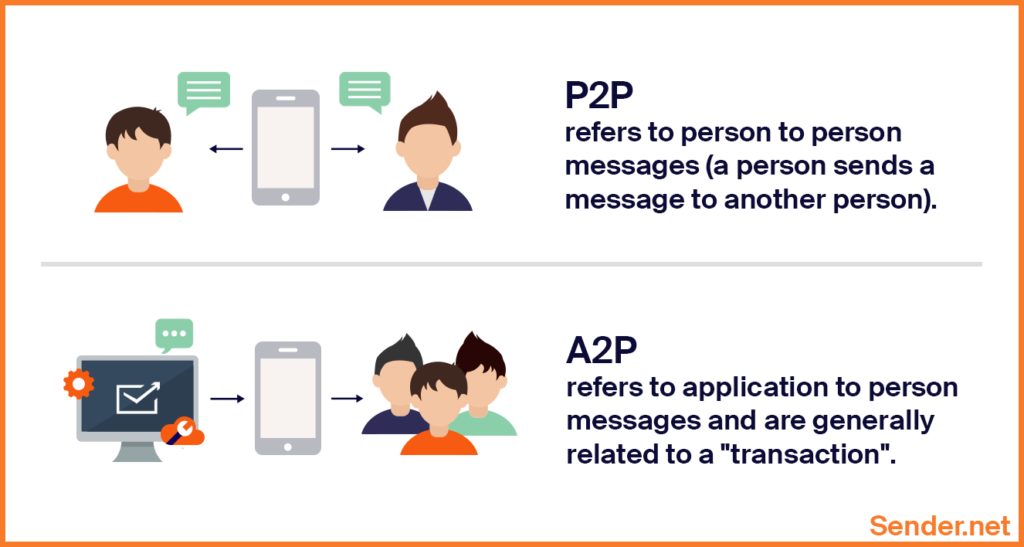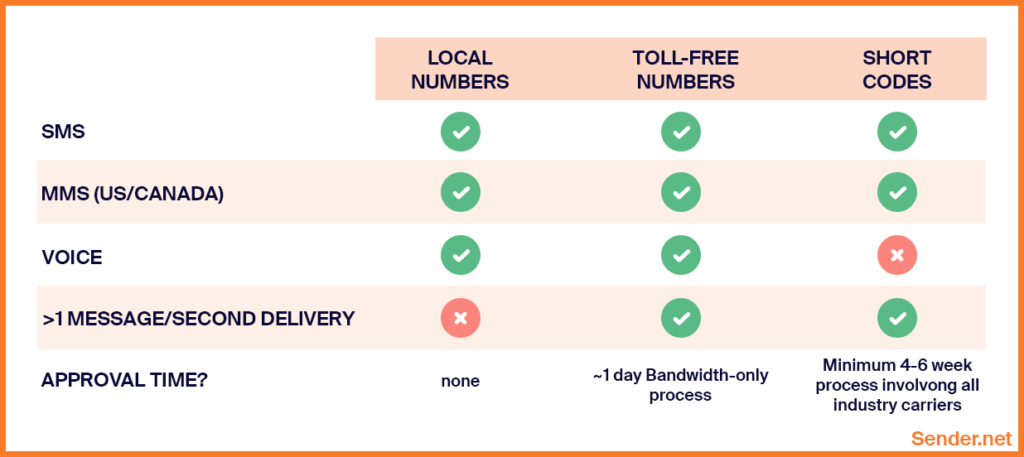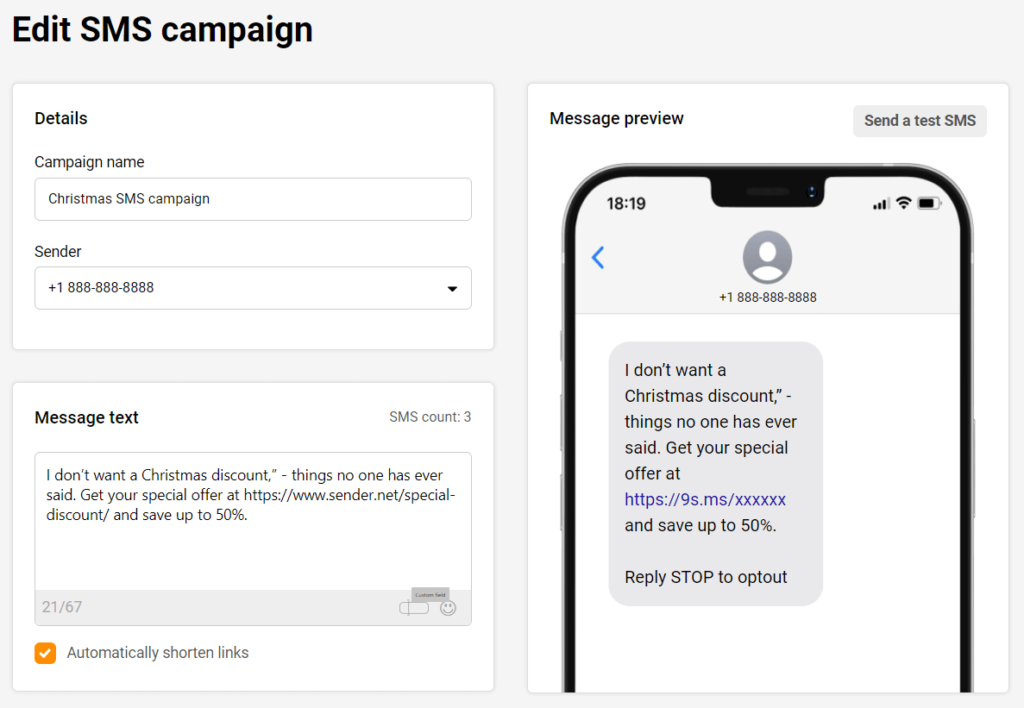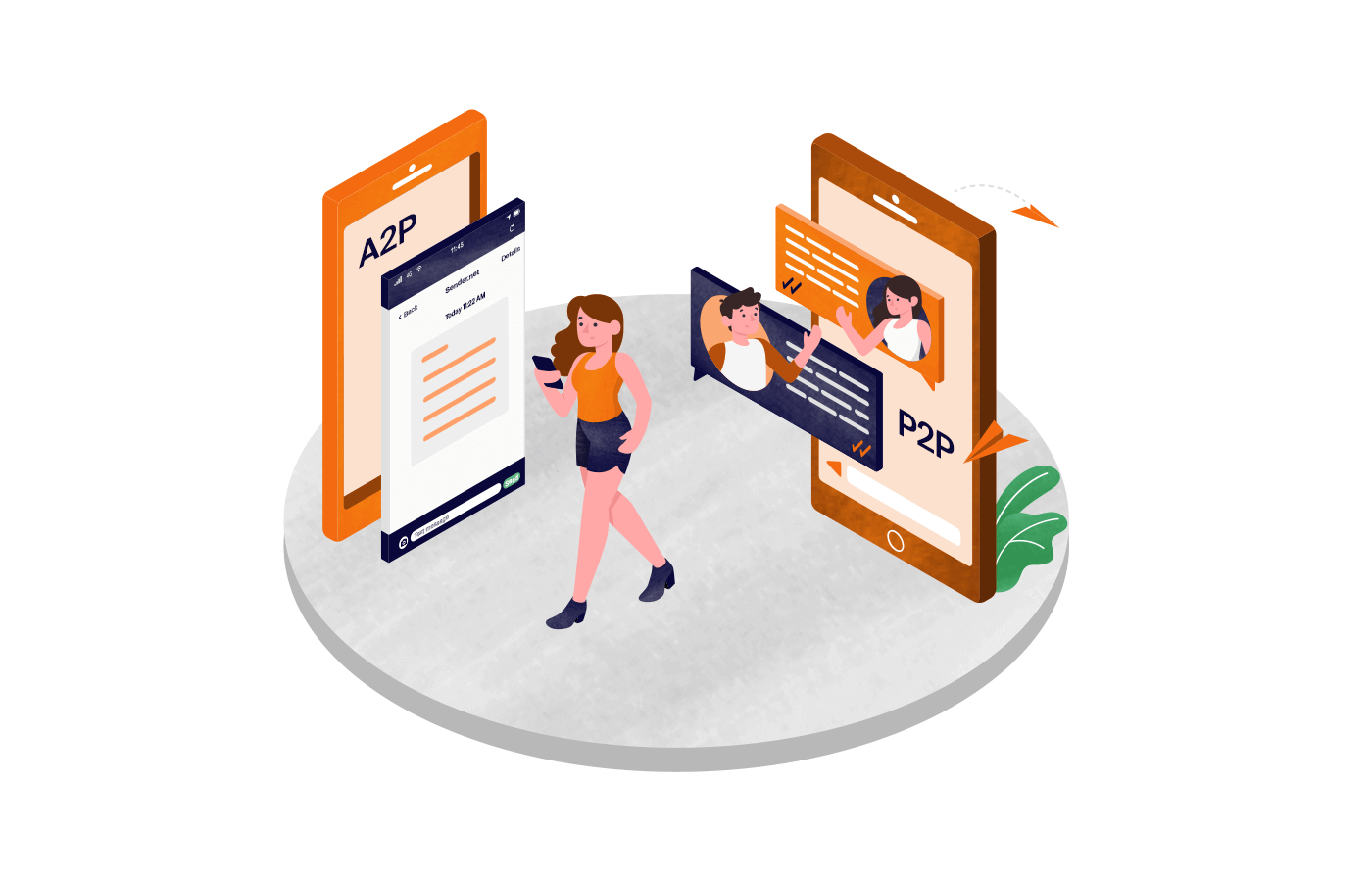Many texting platform providers will give you the option of P2P and A2P messaging.
For newcomers to SMS marketing the concepts and application of P2P and A2P will be confusing. Different rules and regulations across countries only add to the confusion.
As such, we’ve decided to create a short and clear-cut guide about both options. If you’re wondering, for example, how does A2P SMS work, you’ll be able to get your answers here. We will provide a definition for both, provide examples of an A2P messaging platform, and some information about peer-to-peer legal contrivances.
What is A2P SMS Messaging?
A2P meaning and definition can slightly vary between context and country. It does, however, always translate to “application-to-person”. As the name states, in a loose sense, it is receiving a message from an application instead of another person.
Usually, “application to person” has an extremely far-reaching definition. Any type of SMS flow from anything that isn’t a person falls under A2P messaging. For example, in the USA and Canada, the interpretation includes absolutely any marketing messaging, reminders, chatbots, etc. Basically, anything that is automated is A2P.
While local A2P laws will differ, in most countries the interpretation is far-reaching and strict. If your business uses any A2P messaging providers (such as Sender.net), your messaging likely falls under application-to-person.
There are several key things that can define application to person messaging. A2P messaging can be:
- One-way or two-way
- Automated or integrated into a CRM
- Conversational, informational, or transactional
In an overwhelming amount of cases, it’s one-way, automated, and either informational or transactional. Chatbots can be conversational, but for text messaging it’s quite rare. For example, if you send a promotion for your store to a select audience of clients, that’s by definition A2P messaging.
Companies that have extensive legal teams that understand the differences between legislation in countries can spare sometimes sending P2P text messages through applications. Some countries, such as France, may permit it. For all other companies, however, we recommend sticking with A2P in all cases.
What is P2P Messaging?
P2P messaging, as you may guess, is person-to-person messaging. Loosely defined, it happens whenever two actual humans are interacting. No automation or companies are permitted in many cases.

Depending on legislation, application-based communication may be permitted. For example, two mobile users texting through native mobile apps would nearly always be P2P SMS. Two people communicating with text messages through some API may be P2P, but it may also be A2P.
In particular, the USA and Canada consider any application-mediated communication, regardless of the tone, automation, or amount of participants to be A2P. There’s simply no way around it. Any application-based communication is not a P2P text.
Other countries would consider such communication as P2P. That’s why you should always be careful when sending international SMS. If your message does not comply with regulations in that particular market it can be slowed down or blocked entirely.
As with A2P messaging, P2P can be understood through several key aspects. These text messages are:
- Two-way
- Used by individuals, not for a commercial capacity
- Conversational only
As you may see, the definition of P2P is comparatively fairly narrow. In fact, there’s barely room for interpretation outside for considerations about application-based communication. As such, nearly all business-related instant messaging will fall under A2P.
The Contrast of A2P vs P2P
Platforms that provide programmable messaging will generally provide options and guidelines for both A2P and P2P. Since the latter has fairly little use in business cases, we’ll discuss only the main one – conversation.
A2P and P2P Popular Use Cases
Some companies may use P2P as a gateway to facilitate support, sales, or similar communication. Most platforms will allow that, however, there is one important caveat. All numbers should be from the same country as the recipient. Otherwise, two-way communication might be impossible and the plan will be foiled.
For most enterprise-level companies, application-to-person messaging will be the primary route of communication. These cover almost all of the popular use cases for SMS:
- SMS marketing campaigns
- Appointment reminders
- Alerts and notifications
We’ve covered these in-depth in some of our previous articles, so we won’t be delving deeper here. One key reminder about SMS you should know is that it’s an incredibly underutilized channel that has a pretty impressive ROI.
Sending A2P SMS Messages
Whenever the question of sending A2P messages arises, there are three primary ways that carriers allow: toll-free numbers (TFN), 10 digit long-code or local numbers (10DLC), and short-codes. You’ve likely seen all of them in use in your daily life.

10DLC used to be only used for P2P. They look nearly identical to regular phone numbers. In recent years carriers have decided to allow companies to use them to send marketing text messages. However, these numbers are subject to a lot of regulations and rules. Carriers will measure trustworthiness, the use case, and many other factors.
Local numbers do come with the added benefit of supporting voice calls instead of just texting. They are slower than the other two options, though, as sending volumes are limited. Thus, they are best used for low-to-medium volumes of messages.
Toll-free numbers are something you have likely seen live, on the television, and in movies. Anything that begins with “1800” is a toll-free number (at least in the USA). They are the most affordable option that basically supports all the necessary features in some regard. Additionally, you can also send a pretty decent volume of messages.
Finally, shortcodes are the ones most frequently used when opt-ins are required (such as for online marketing campaigns). Shortcodes are extremely easy to remember, making it easier for the customer to opt in.
However, they are the most costly, and procuring one may take some time. On the other hand, they have the highest throughput, meaning you’ll be able to send incredible volumes of messages.
Also read:
Secure The Best of A2P & P2P Messaging
In most cases, you’ll be using A2P messaging. In fact, if you don’t know many of the laws and regulations, it’s better to think of SMS marketing communication as purely A2P. It will just make things easier for you.
Want to get started with SMS marketing and A2P messaging? Sender.net has everything you need to build effective SMS + Email marketing campaigns from start to finish, including marketing automation, popups and more.

Take Sender for a spin and experience complete functionality with zero financial commitment. The FREE FOREVER plan provides you with complete arsenal of features. Sign up and see if your business can benefit from A2P messaging.




